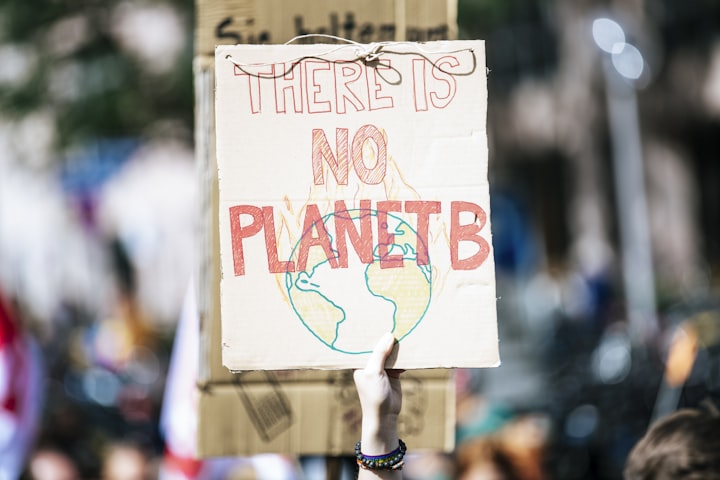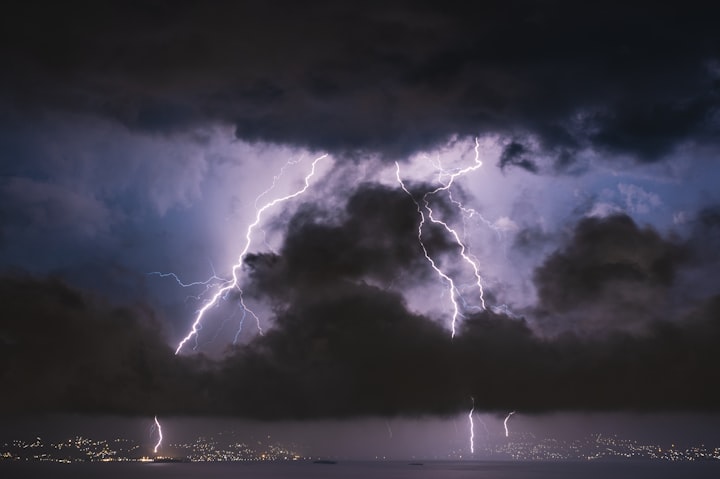Too Late
Looking Back From the Not-So-Distant Future

Today I walked down 3rd Avenue--the street I grew up on and walked hundreds of times all those years ago. I thought about those walks home from school every day: watching and listening to birds fluttering through the canopies of trees above; looking to my right to see the big beautiful Rocky Mountains full of majesty and life; and taking in the clean, fresh air underneath the beautiful, clear, blue sky. But this time, it was different.
They didn’t believe this would really happen. “It’s just part of the natural cycle” they would say. Politicians brainwashed the public into thinking it was a hoax, censored the media and Internet to avoid relaying information regarding climate change, and attempted to prohibit scientists from researching these issues--anything to continue gaining a profit from fossil fuel production.
It feels like an old faded memory: vibrant blues and greens of spring; brisk air of winter; birds chirping as the sun rose from behind the snow-capped Rockies, fresh smell of pine on a summer hike, blue skies reflecting on the crystal clear water of Mission Creek. What I would give to experience that pristine world once again.
This could have been avoided. Some of us tried, but “some” was not enough. We had so many great proposals--all turned down by greed. Solar panels were introduced all the way back in the 1950s--over 100 years ago--, but coal was much cheaper and therefore preferred regardless of the future consequences. People protested throughout the globe for awareness and change, but they were mocked and ignored. Scientists presenting evidence of the devastation received death threats. It had become a world where green paper was worth more than life itself.
Growing up, I always dreamed of traveling to Australia and scuba diving through the Great Barrier Reef to witness its beautiful colors and diversity. By the time I had the chance to do so, however, it was too late. Sea temperatures had risen past what the coral could tolerate. While a couple degrees doesn’t seem like a big deal to us as humans, it was devastating to the coral reefs and everything living among them. In a span of just thirty years, fifty percent of the world’s coral was dead, and shortly after that, there was no living coral anywhere on Earth.
I know some people were not heartbroken over the fact that they’d never get the opportunity to see a living coral reef with their own eyes, but what they didn’t realize was that there would be such a devastating domino effect created by the loss. Coral reefs supported an immense amount of sea life; life that was a necessity for many coastal human populations in terms of both food and economy. For many small island nations, the only protein available was the fish in the ocean. Once the coral was lost, so were many fish species, therefore driving the well-being of these nations into the ground. Economies also thrived on the tourism and fishing industries, so when the corals disappeared, a major source of income for millions of people did too.
Living the first 18 years of my life in Montana, the only things I knew for almost half of every year was snow and cold. I grew up making snowmen and snow angels, sledding and snowmobiling, drinking hot cocoa and always having a “white Christmas.” I learned to downhill ski at a very young age, and eventually transitioned to snowboarding. Snowboarding was a passion of mine and my family’s for many years, and I made so many great memories doing it. I’ll always remember the winter of my freshman year of highschool and the immense amount of snow that dropped on our favorite ski resort that year. It was officially announced 13 years ago that snow will never be seen in Montana again.
Snow and cold created much more than just fond memories, though. The glaciers in the Arctic once controlled the majority of the ocean currents and weather patterns of the planet. When I was learning about climate change in college, one of the biggest topics discussed was the melting of the glaciers and how it would cause sea level rise throughout the globe. Everyone knew about these predictions and how devastating it would be, but preventative action was not taken fast enough. The glaciers melted, as predicted, as global temperatures increased from carbon emissions. They became thinner and thinner, exposing the dark rock underneath. The darker surface increased the absorption of sunlight, causing even more melting. It was an endless cycle that could have been stopped if action had been taken sooner.
As the window of prevention slowly came to a close, shortly after the United States Presidential Election of 2016, people all over the globe began to see the effects of the melting glaciers. The Hawaiian Islands, where I had some of the best experiences of my life while attending college there, began to flood with sea level rise and are now completely uninhabitable. Major coastal cities--contributors to the global economy--all around the world were slowly flooded and destroyed. The ocean currents changed drastically without the Arctic glaciers controlling them anymore, consequently changing weather patterns all around the world. The Great Plains of the United States experienced the worst droughts and highest temperatures in history and are now uninhabitable. Northern Europe, in contrast, experienced the coldest temperatures and most extreme snowstorms in its history.
If only today’s generation could experience what I did when I was young. If only they could enter the rivers--what is left of them anyway--with no fear of getting sick from the concentration of oil that was leaked into them after more and more pipelines were spread throughout the country; if only they could have lived before the water wars begun.
Now that there is no food to eat and no water to drink, no national parks, no coral reefs, and virtually no forests or wildlife; now they believe us. Now they see it was not a “hoax,” it was not “part of the cycle.” But now it’s too late.
Today I walked down 3rd Avenue. I walked past the place where my house once was. It has been 60 years since the fire of 2025--the hottest year in Earth’s history at that time--swept it into flames. The view from our back porch used to be the most beautiful site before the mountains were stripped of their trees by corporate logging companies, before the ozone layer stopped allowing snow to fall every year, and before the vast green fields were taken over by oil rigs. I look up, only to see that the sky, once big and blue, is now blanketed in a thick haze. There is no trace of the birds, or the trees they once inhabited.






Comments (1)
a beautiful twisted slap of reality. this hits hard.